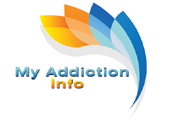
An Overview of Prescription Drug Abuse
What's In This Article?
Most folks worldwide take drugs based on their doctor’s prescription. However, there is a high chance that you have taken drugs that weren’t meant for you at one time or the other.
Chances are you have either taken a friend or family members’ drugs, or you know someone who has. According to the National Institute on Drug Abuse, about 48 million people from the age of 12 and above have at some point in their life used prescription drugs for non-medical reasons.
In a study conducted in 2015 by the Substance Abuse and Mental Health Services Administration (SAMHSA), it was discovered that about 18.9 million Americans from 12 years and above misused prescription drugs the previous year.
For some time now the number of medical emergency cases relating to opioid medications has continued to increase due in part to the ease of getting prescription for most opioid medication.
Why are prescription drugs addictive?
Prescription drugs like opioids, anti-depressants, stimulants, etc. are very addictive due to the nature in which they act. They combine with the receptors in the brain cells and are able to change the mood of a person and make them feel and act differently in some specific situations.
When people use prescription medication over a long period of time and in volumes other than they were prescribed they easily get ‘hooked.’ Below are some other reasons;
- Pain relief: Many of the prescription drugs abused were initially taken to combat pain, but due to their misuse they become addictive.
- Relaxation: Many prescription drugs are to help people relax, make them calm and reduce anxiety.
- Sleep: Taking opioid medications to help with sleep over a long period may become addictive
- Feelings or emotions: Many of these prescription drugs can alter moods and give you a certain feeling of elation.
- Experiment: Many young adults try out new drugs just to experience them.
- Some folks become tolerant to prescription drugs and have to take higher volumes for them to have the same effect, and at this point they become hooked.
Commonly abused prescription drugs
Opioid medications are meant to treat pain but when taken they give a euphoric effect. Signs and symptoms of opioid misuse may include:
- constipation
- changes in behavior or personality
- confusion
- changes in vision
- drowsiness
- dizziness
- difficulty breathing
- euphoria
- headache
- lethargy
- nausea
- seizures
- vomiting
Oxycodone (OxyContin)
Oxycodone is usually sold as OxyContin it has the ability to change how the brain or the central nervous system respond to pain. Just like other opioids, it can give a euphoric feeling. The Drug Enforcement Administration (DEA) revealed that over 58.8 million prescriptions for oxycodone were written in 2013 in the US.
Codeine
Codeine is commonly used to treat pains, and in combination with other drugs, it is also used to treat cold and cough. Like most prescription drugs when abused or consumed at a higher volume it produces a sedative effect.
Fentanyl
The Centers for Disease Control and Prevention (CDC) revealed that fentanyl is about 100 times more powerful than morphine. It is a synthetic opioid which is also prescribed to treat all forms of pain and also offers feelings of elation and sedation. The CDC also reported in 2017 that it was responsible for over half of the opioid-related overdose deaths in ten states.
Depressants/Tranquillizers
Some commonly abused central nervous system depressants include barbiturates and benzodiazepines. When taken they produce a sedative effect. Some common signs and symptoms of misuse include:
- changes in vision
- changes in behavior or personality
- confusion
- drowsiness
- dizziness
- headache
- lethargy
- irritability
- memory problems
- loss of coordination
- slurred speech
- nausea
- vomiting
Alprazolam (Xanax)
Alprazolam is a benzodiazepine sold as Xanax. It is usually used to treat anxiety and panic disorders. It produces a sedative or calming effect by altering the CNS. The CDC reported that over four times more Americans died in 2015 than 2002 due to overdosing on this drug.
Stimulants
Stimulants like the name implies alter the brain by boosting its activity. They can increase the levels of energy and alertness. Some common signs and symptoms of misuse include:
- aggressiveness or hostility
- changes in vision
- changes in behavior or personality
- dilated pupil
- euphoria
- hallucinations
- headache
- nausea
- rapid heart rate
- reduced appetite
- paranoia
- vomiting
- weight loss

